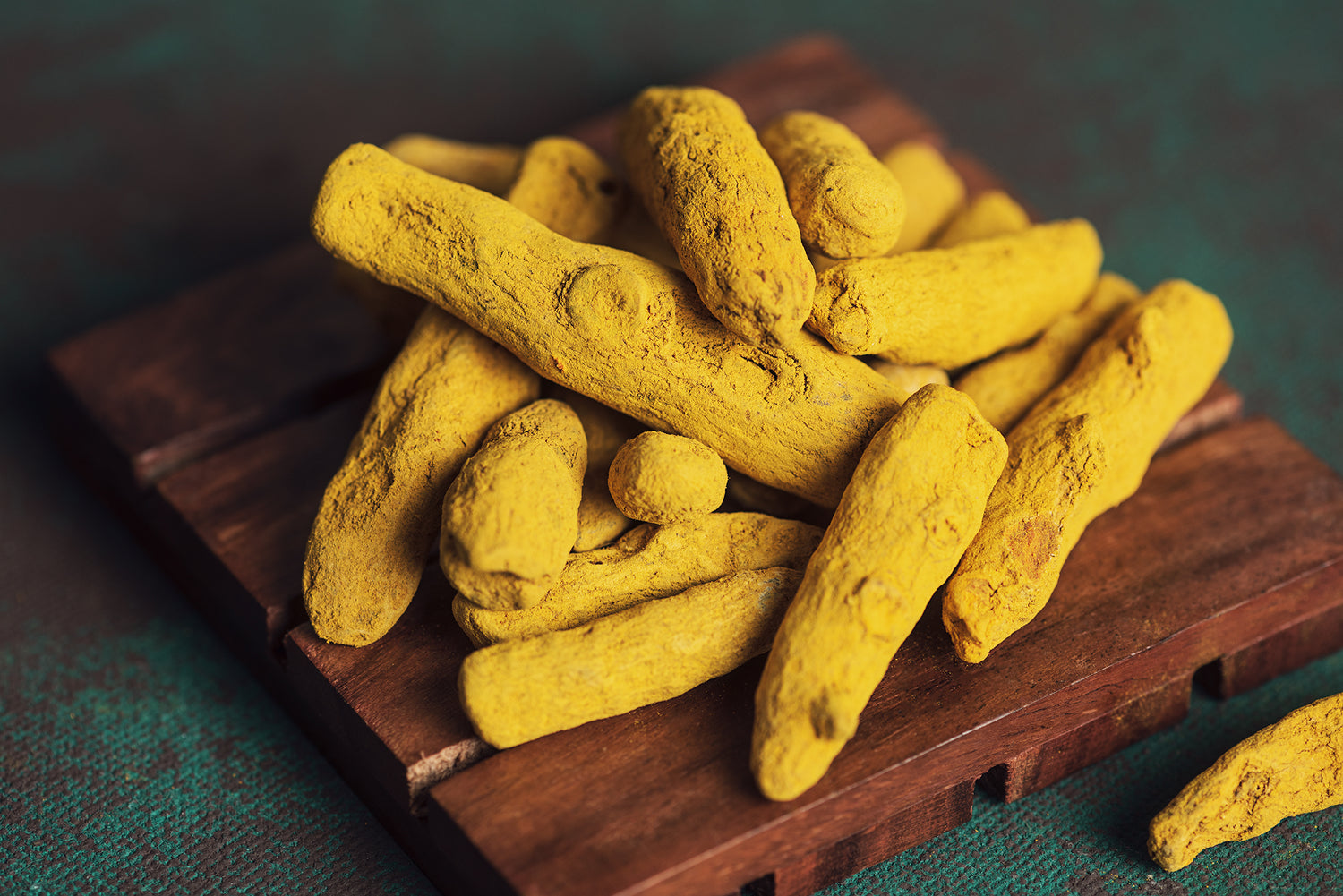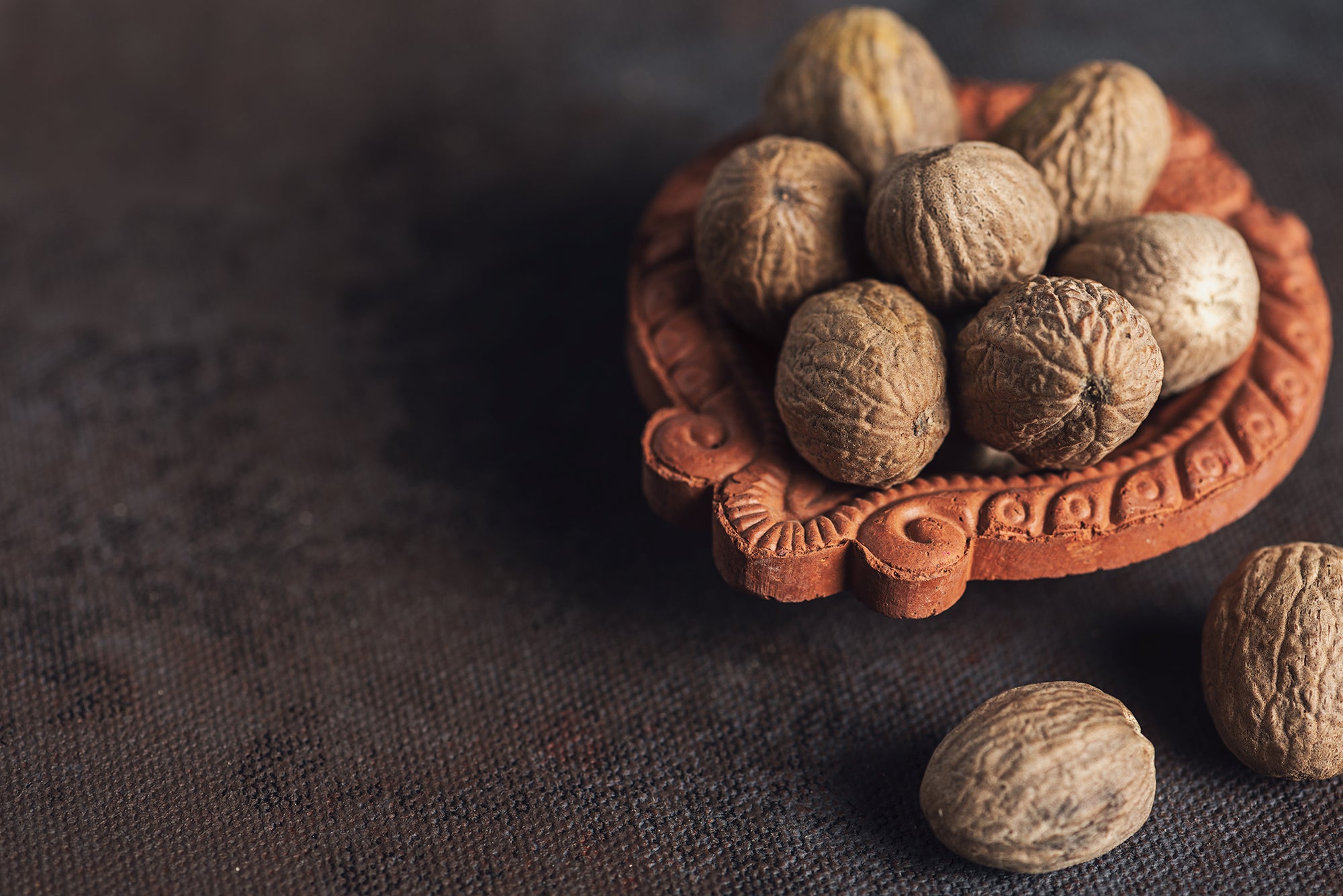The Golden Wonder, the Super-spice, the Queen of Spices; call it what you wish, the humble turmeric is definitely worthy of all these titles and more.
Native to the Indian subcontinent, this bright orange-yellow hued spice with a unique earthy taste and a hint of bitterness is also packed with an array of healing properties.
Growing And Harvesting Turmeric
Native to South Asia, turmeric is a perennial herb that grows up to 1 meter high. Though the rhizomes or tubers that grow underground are primarily used, the leaves too are used in certain cuisines. The plant requires a well-drained fertile alluvial soil; a frost-free climate with at least 1500mm rains annually.
Originally from India, turmeric is now cultivated throughout tropical Asia and other tropical and sub tropical parts of the world.
Turmeric is one of the easiest plants to grow. In fact, if you live in a favorable environment you can grow turmeric in your terrace or backyard. Just break the rhizome into small pieces and place it at least 2 inches below the soil surface with the buds facing up. With proper care, the plant will be ready to harvest in about 10 months.
For harvesting, just dig up the plant completely once the leaves become yellow and stems start to dry. Cut the required amount of turmeric rhizomes and replant the rest.
After thorough cleaning, boil the turmeric rhizomes, peel them and dry them well in sunlight. After they are nicely dried powder them and your organic turmeric powder is ready to use.
Getting Back To The Roots
Also known as the Indian Saffron, turmeric has been used in India for tens of thousands of years. Not only is it a necessity in most Indian cuisines, this super spice is probably nature’s most powerful antioxidant and anti-inflammatory.
Not only is it packed with proteins, healthy fats, carbohydrates and fiber, turmeric is also rich in manganese, iron, potassium and vitamin C.
Turmeric is beneficial both topically and internally. It is a go-to spice that is used not only to soften the skin and clear blemishes but also treat ringworms, fungal infections and to heal small wounds and burns. Consuming turmeric can help lower blood sugar levels; give relief from arthritis pain and PMS pains, prevents any digestive issues, control hypertension and heal some eye disorders. Studies have proved that it’s also used in prevention and therapy of Cancer and Alzheimer’s.
Curcumin – The Wonder Compound
Forming about 2%-5% of turmeric, curcumin is the active ingredient of a dried turmeric root. This compound is highly anti inflammatory with zero side effects. It also has potent antioxidants that help neutralize the effect of free radicals. Curcumin also boosts the levels of BDNF, a hormone in the brains that increases the growth of new neurons and fights degenerative processes. Studies have also showed that curcumin may help prevent and perhaps treat arthritis, cancer and Alzheimer’s even.
Turmeric And Ayurveda
Also known as Haridra, turmeric’s healing powers have been used in Ayurveda since eons. It’s Tridoshic; its heating quality balances Kapha and Vata doshas while the bitter taste balances the Pitta.
Primarily used for purifying blood, treating skin ailments and sometimes even in treatment of lung, liver and heart diseases, turmeric is also used both as a curative and preventive agent in the treatment of diabetes. Since it’s anti-bacterial turmeric is also used to heal infected wounds.
Piperine in black pepper helps in absorption of turmeric, it in fact increases the benefits by tenfold and is hence almost always consumed together.
Unexpected Ways To Use Turmeric
Other than its flavor enhancing and medicinal properties, turmeric has few more tricks up its sleeves.
- Adding turmeric to dairy products like milk, curd, cheese or cottage cheese increases their shelf life.
- Sprinkling some turmeric powder on the floor and kitchen slabs prevents ants.
- It is a great natural dye for clothes and linens; take advantage of its bright orange stain and use some turmeric paste in your DIY dye projects.
- Include turmeric in your beauty routine to get an acne free glowing skin.
- Treat itchy scalp by applying a mixture of olive oil and turmeric on your scalp for 15 minutes before washing off.
We have used turmeric in:
Quick Facts
| Name: | Turmeric |
| Scientific Name: | Curcuma Longa |
| Cultivated in: | South Asia |
| Other names: | Curcumin, Curcuma aromatica |
| Habitat | Warm weather, Tropics |
| Soil | Well-drained rich soil with high organic content. Avoid water-logged soil. |
| Plant Size | Can reach to 3 feet |
| Aroma | Earthy mustard like |
| Plant parts used | Roots, Leaves and Flowers |
| Major Nutrients | Vitamin C Calcium Beta Carotene Fiber Iron Vitamin B6 Magnesium Manganese Potassium Zinc Dietary Fiber |
Ayurvedic Facts
| Sanskrit Name: | Haridra, Kanchani, Ausadhi |
| Taste: | Pungent, Bitter |
| Energitics: | Hot |
| Effect on Doshas: | Balances all three Doshas i.e Vata, Pitta and Kapha |
| Used for Treating: | Skin Disorders, Stomach Ailments, Throat Infection, Bacterial Infections, Inflammation,Anemia, Diabetes, Heart Ailments etc |
Known As In
| Hindi | Haldi |
| Bengali | Halud, Pitras |
| Oriya | Haldil |
| Gujrati | Haldhar |
| Telugu | Pasupu |
| Marathi | Halede, Halad |
| Malayalam | Manjal |
| Tamil | Manjal |
| Konkani | Halad |
| Kannada | Arshina |




.png?v=1668878203)



